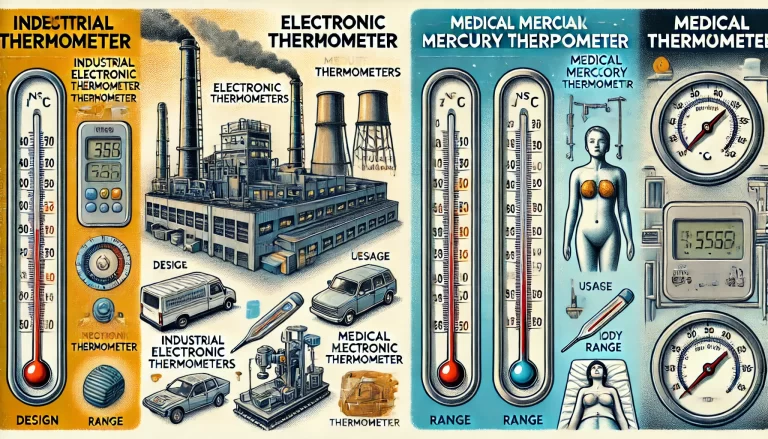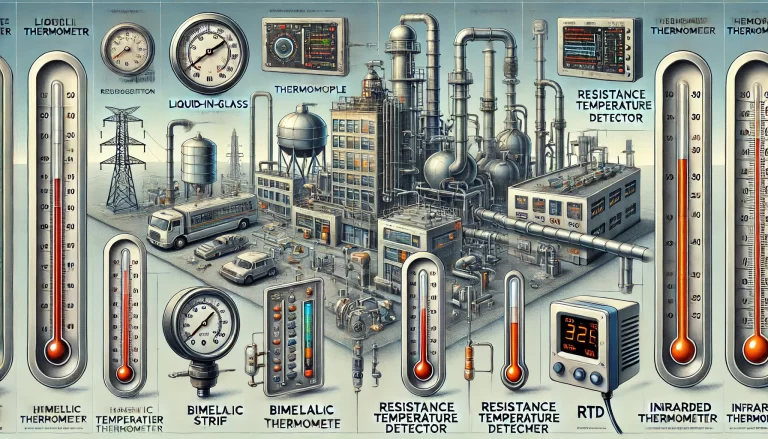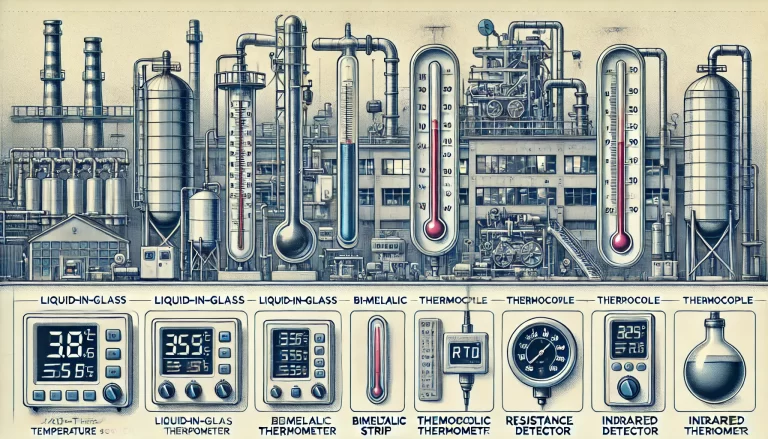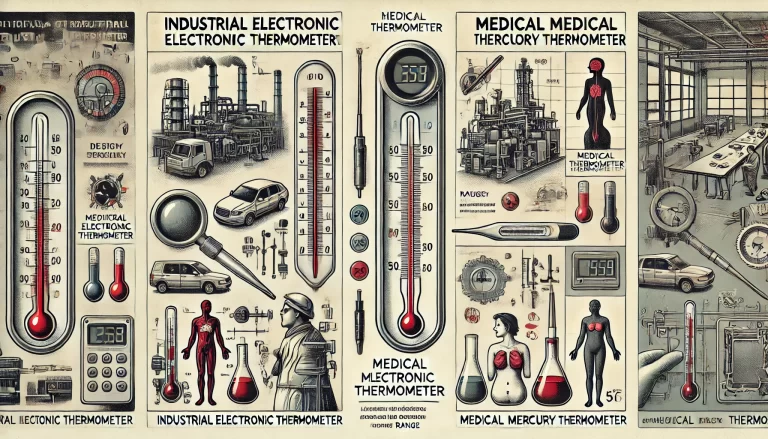When comparing industrial electronic thermometers and medical mercury thermometers, it is essential to understand their distinct purposes, designs, and functionalities. These differences are rooted in the environments in which they operate and the precision required for their respective applications. This article explores these differences in greater detail and explains why industrial electronic thermometers are unsuitable for measuring human body temperature.

Primary Differences
1. Purpose
Industrial Electronic Thermometers: These devices are engineered to measure temperature in industrial settings. They are commonly used to monitor machinery, liquids, gases, and other components in diverse environments such as factories, laboratories, and power plants.
Medical Mercury Thermometers: Designed specifically for measuring human body temperature, these thermometers are tailored to detect minute temperature variations within a narrow range that corresponds to normal body temperature.
2. Measurement Range
Industrial Electronic Thermometers: These thermometers feature a wide measurement range, often spanning from -200°C to over 1000°C. This makes them versatile for various industrial applications but unsuitable for the narrow range of human body temperature.
Medical Mercury Thermometers: Their measurement range is typically limited to 35°C to 42°C, focusing solely on detecting body temperature with precision.

3. Accuracy and Precision
Industrial Electronic Thermometers: While accurate for industrial needs, their precision may vary depending on the application. A typical industrial thermometer has a tolerance of ±1°C or more, which is insufficient for detecting small changes in body temperature.
Medical Mercury Thermometers: These thermometers are highly precise, often accurate to ±0.1°C, allowing for reliable detection of fever or hypothermia.
4. Sensor Types and Technology
Industrial Electronic Thermometers: These devices utilize advanced sensors such as thermocouples, resistance temperature detectors (RTDs), or infrared sensors. While these technologies excel in industrial environments, they are not optimized for human body temperature ranges.
Medical Mercury Thermometers: They rely on the thermal expansion of mercury, a highly sensitive method for detecting temperature changes within the human body.
5. Design and Usability
Industrial Electronic Thermometers: Designed to withstand harsh conditions, they often feature robust casings resistant to high temperatures, pressure, and corrosive substances. However, they lack the ergonomic design and safety features required for medical use.
Medical Mercury Thermometers: Their design prioritizes safety and usability, with smooth, hygienic surfaces suitable for contact with skin or mucous membranes.

6. Calibration and Standards
Industrial Electronic Thermometers: Calibration focuses on broad temperature ranges and industrial standards. These devices are not fine-tuned for the precise range needed for human temperature measurements.
Medical Mercury Thermometers: They adhere to stringent medical device standards, ensuring reliable performance specifically for human body temperature assessment.
Why Industrial Electronic Thermometers Cannot Measure Body Temperature
Despite their versatility and advanced technology, industrial electronic thermometers are unsuitable for measuring body temperature due to several critical factors:
1. Inappropriate Measurement Range
Industrial electronic thermometers are designed for broad temperature ranges, which often exceed the narrow band of 35°C to 42°C required for body temperature measurements. This lack of optimization results in reduced accuracy and reliability for human applications.
2. Insufficient Precision
Human body temperature measurement demands high precision, as even a small deviation (e.g., 0.1°C) can significantly impact medical diagnoses. Industrial thermometers, with their broader error margins, fail to meet this requirement.
3. Safety and Hygiene Concerns
Industrial thermometers are not designed with materials or structures that prioritize human safety. They may use components unsuitable for direct contact with skin or mucous membranes, posing potential health risks.
4. Incompatibility with Medical Standards
Medical devices, including thermometers, must comply with specific standards (such as ISO 80601-2-56). Industrial electronic thermometers do not adhere to these guidelines, making them unfit for clinical use.
5. Sensor Optimization
The sensors in industrial thermometers are not optimized for the thermal characteristics of human skin or internal body temperature. They may respond too slowly or inaccurately in such contexts.

Conclusion
Industrial electronic thermometers and medical mercury thermometers serve entirely different purposes. While the former excels in robust industrial environments, the latter is meticulously designed for medical applications, prioritizing precision, safety, and reliability in human temperature measurement. If accurate body temperature readings are required, medical thermometers—either mercury-based or modern electronic alternatives—are indispensable. Attempting to use an industrial thermometer for such purposes can lead to inaccurate results, posing risks to health and safety.
